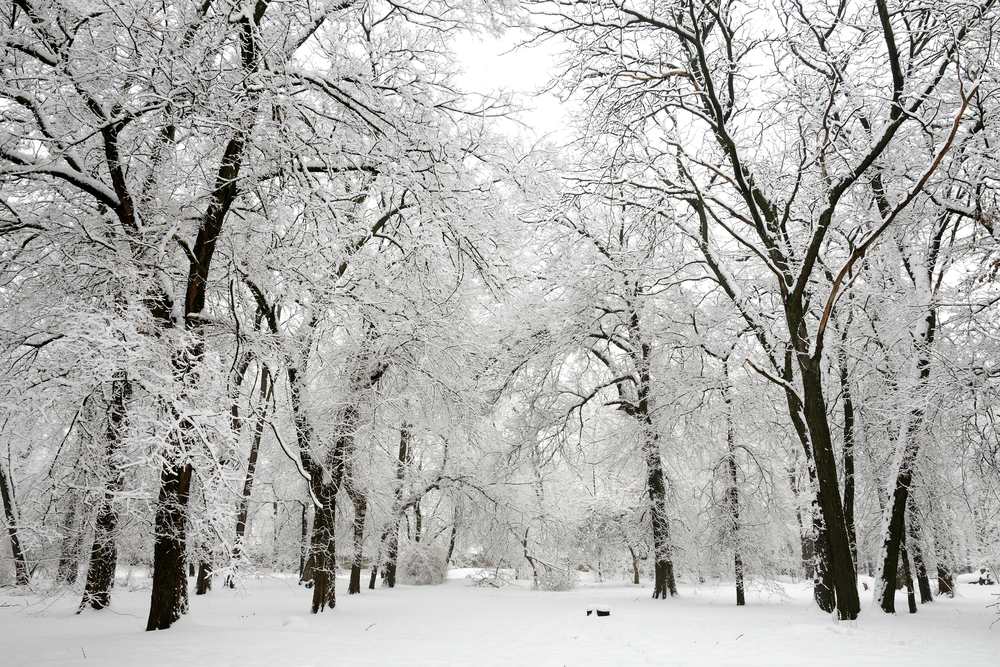Winter Tree Care
Winter is a great time to give our favorite trees a little extra love and attention to ensure they weather the season fairly. Harsh winds paired with snow and ice on limbs, and freezing grounds can increase the likelihood of tree failure. Fortunately, there are ways to mitigate these stresses and ensure our trees come in to spring bloom healthy and thriving.
Water
Ensure your trees have enough water leading in to the winter season. Once the ground is frozen, it is harder for roots to absorb moisture. Freeze-thaw cycles can increase this stress. Particularly dry and mild winters require watering throughout.
- Continue to water trees until the ground freezes.
- Young trees can be watered once a week or every two weeks.
- Mature trees can be watered once a month.
- Apply water slowly so it can be absorbed; if the ground remains wet for a long while after watering, reduce time and/or amount of water applied.
Mulch
Mulch rings help to insulate the ground and therefore the roots, as well as help to retain moisture and nutrients.
- Apply a layer of mulch 2- 4 inches deep in a donut shape.
- Mulch should extend from 3 inches away from the trunk, out to the ends of the limbs.
- Use natural mulch: woodchips, leaves, and other organic materials.
- Do not allow mulch to stack up against the tree trunk.
Pruning
Winter is the perfect time to prune trees as they become dormant in the winter season.
- Prune off dead, dying, and diseased material
- Establish a central leader
- Create a safe clearance for walkways
- Decrease weight of at-risk scaffold limbs
*A special note for Oaks, Elms, Beech: these tree species are at risk of pathogens in our environment and should only be pruned in dormancy to lessen the spread of disease.
Tree Coverings
Ornamental, non-native, and young native species can be more susceptible to our harsh winters. Coverings will help protect from the elements.
- Place stakes around the tree and wrap burlap around the outside of the stakes.
- Ensure the burlap does not touch any of the tree material.
- Remove snow buildup as it accumulates and reposition the burlap.
About the Author: Ashley is an arborist at Wyoming Tree Service, specializing in plant health care. She is a graduate of the Forestry Technician and Arboriculture programs at Fleming College and is a licensed exterminator who works with both landscape and forestry pesticides.



